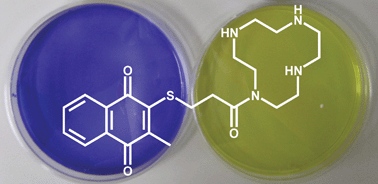Exploring synthetic avenues for the effective synthesis of selenium- and tellurium-containing multifunctional redox agents†
Abstract
Various human illnesses, including several types of cancer and infectious diseases, are related to changes in the cellular redox homeostasis. During the last decade, several approaches have been explored which employ such disturbed redox balances for the benefit of therapy. Compounds able to modulate the intracellular redox state of cells have been developed, which effectively, yet also selectively, appear to kill cancer cells and a range of pathogenic microorganisms. Among the various agents employed, certain redox


 Please wait while we load your content...
Please wait while we load your content...